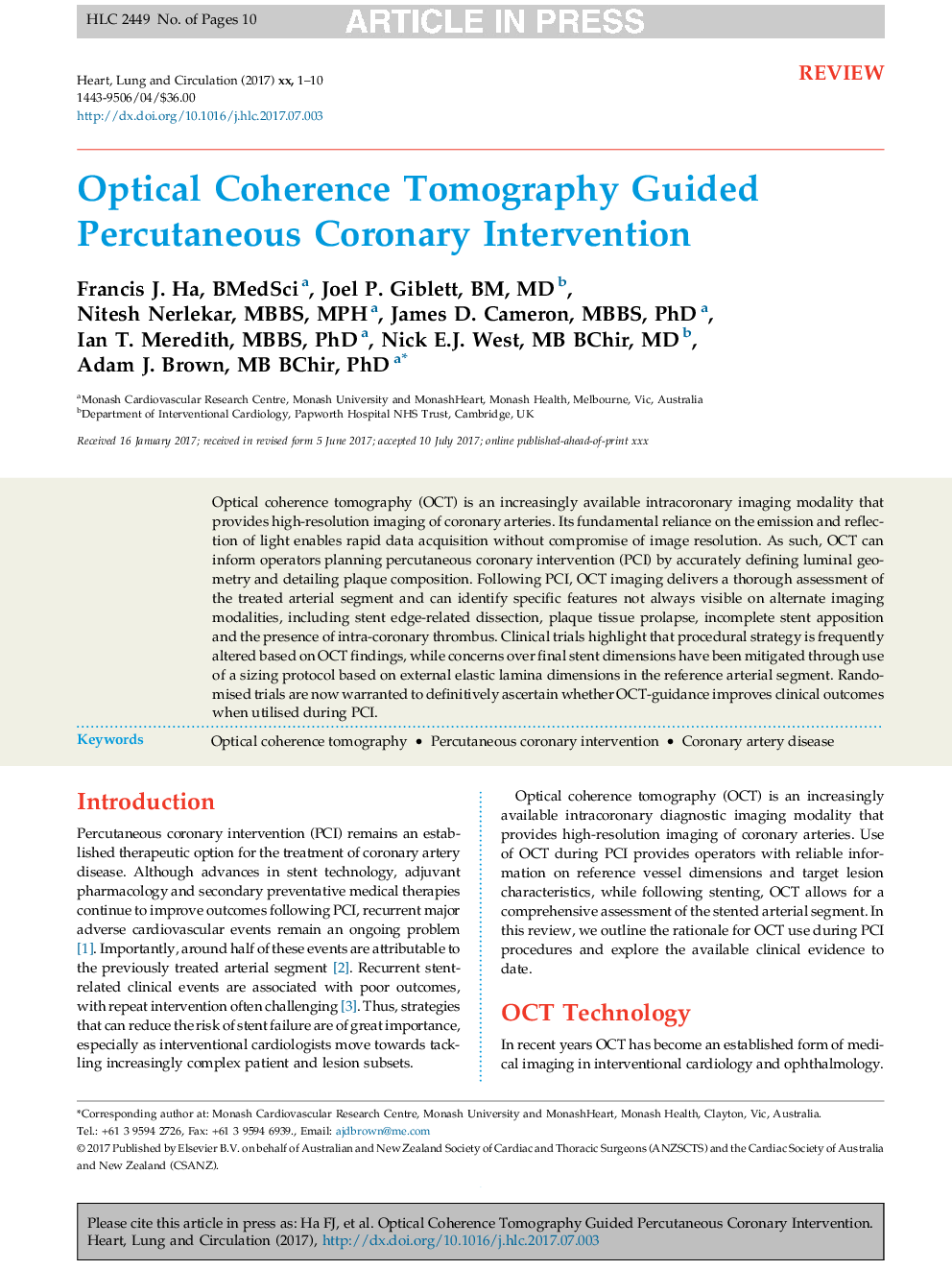| Article ID | Journal | Published Year | Pages | File Type |
|---|---|---|---|---|
| 8660012 | Heart, Lung and Circulation | 2017 | 10 Pages |
Abstract
Optical coherence tomography (OCT) is an increasingly available intracoronary imaging modality that provides high-resolution imaging of coronary arteries. Its fundamental reliance on the emission and reflection of light enables rapid data acquisition without compromise of image resolution. As such, OCT can inform operators planning percutaneous coronary intervention (PCI) by accurately defining luminal geometry and detailing plaque composition. Following PCI, OCT imaging delivers a thorough assessment of the treated arterial segment and can identify specific features not always visible on alternate imaging modalities, including stent edge-related dissection, plaque tissue prolapse, incomplete stent apposition and the presence of intra-coronary thrombus. Clinical trials highlight that procedural strategy is frequently altered based on OCT findings, while concerns over final stent dimensions have been mitigated through use of a sizing protocol based on external elastic lamina dimensions in the reference arterial segment. Randomised trials are now warranted to definitively ascertain whether OCT-guidance improves clinical outcomes when utilised during PCI.
Related Topics
Health Sciences
Medicine and Dentistry
Cardiology and Cardiovascular Medicine
Authors
Francis J. BMedSci, Joel P. BM, MD, Nitesh MBBS, MPH, James D. MBBS, PhD, Ian T. MBBS, PhD, Nick E.J. MB BChir, MD, Adam J. MB BChir, PhD,
